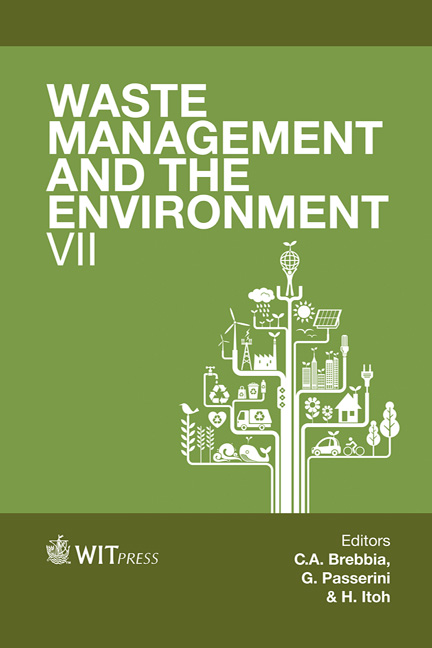The Wonders Of Waste Processing By Termites
Price
Free (open access)
Transaction
Volume
180
Pages
10
Published
2014
Size
703 kb
Paper DOI
10.2495/WM140431
Copyright
WIT Press
Author(s)
A. H. Hussein
Abstract
The aim of this research is to demonstrate how to use the ecological niche of termite colonies for the benefit of humans. It is known that termites feed on papers wastes, particularly cardboard. In a trial experiment to demonstrate this capability it was found that termites produce hydrogen as a by-product and wastes of high potassium, phosphorous, and nitrogen content. It was then proposed to demonstrate the feasibility of using termites for getting rid of wastes, to increase the soil fertility and to produce hydrogen as a source for renewable energy. To prove the hypothesis, information about the ecology of termites and its favourable conditions in terms of temperature, moisture and preferable food sources was collected. Accordingly, several experiments were conducted using a designed Psammotermes hybostoma hydrogen bioreactor (P.H.H. bioreactor) that was constructed for growing a colony of termites on wastes of cardboard as a food source at different temperatures and constant moisture conditions. Results showed that if we use a medium sized colony (about 2 million termites) then it can produce about 660 litres of hydrogen every 24 hours. It is therefore concluded that many environmental problems can be solved using termite colonies. Solid wastes can be managed by the digestion of paper and cardboards in the termites’ gut. Also, soil present in the P.H.H. bioreactor can be used as a valuable fertilizer and the hydrogen produced can be used as a renewable source of energy. Keywords: termites, hydrogen production, soil fertility, Psammotermes hybostoma hydrogen bioreactor, renewable energy, environmental problems.
Keywords
termites, hydrogen production, soil fertility, Psammotermes hybostoma hydrogen bioreactor, renewable energy, environmental problems.





